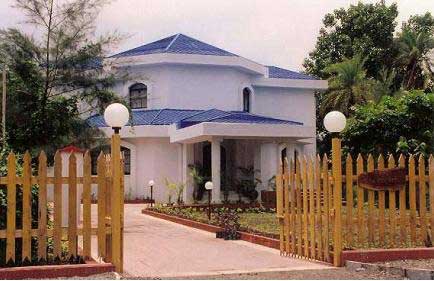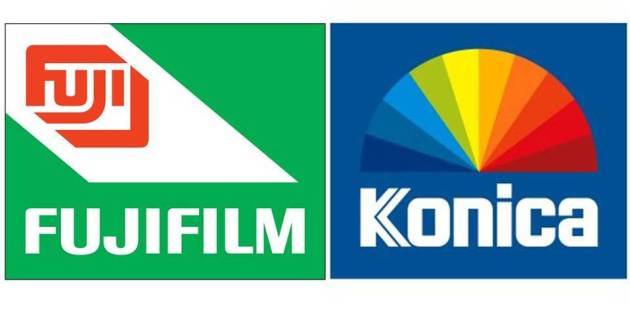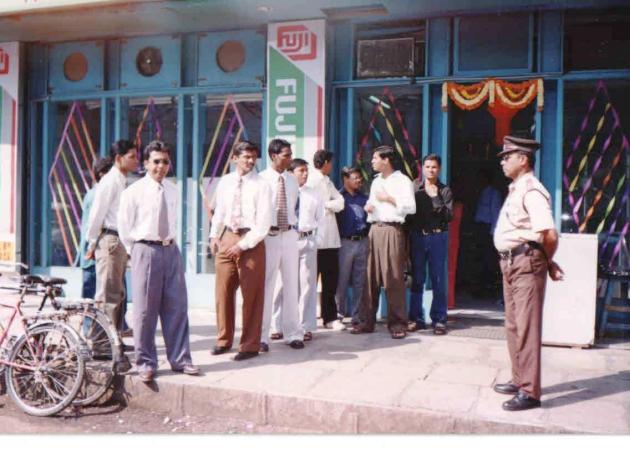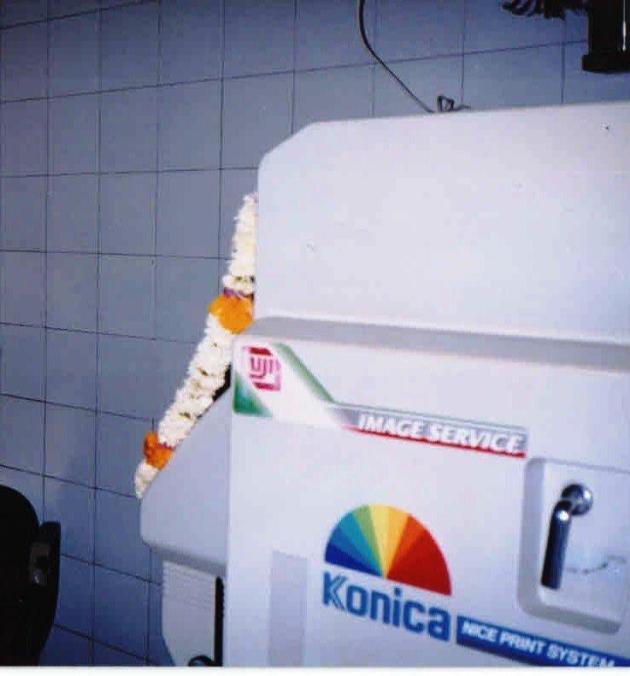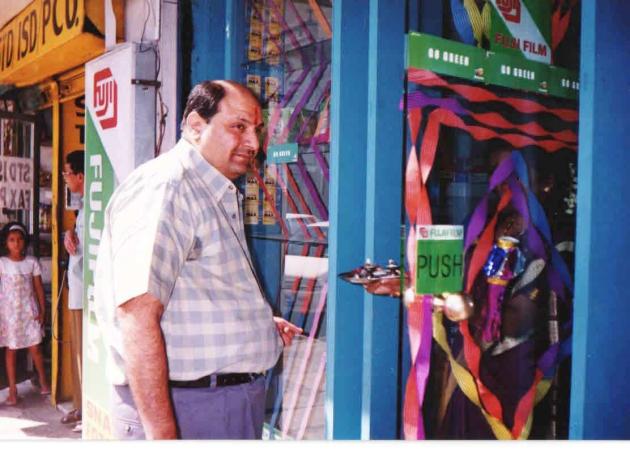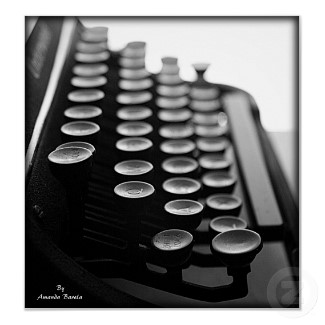Give your customer a comprehensive solution and not just a product Part II
September 28, 2012
This is the second part of my earlier blog post on Customer Satisfaction. You can read the first blog post here.
It was 1999 and I had just ventured in to the Real Estate business then. Although I have come across many incidents and have learnt many lessons during my entrepreneurial journey, I can never forget my experience with my first real estate customer! I met my first customer, one Mr. Manhar Bhansali, through word of mouth. He was a big diamond trader and had come to Pune on a business trip from Mumbai and had heard about our project through his sources. On arriving in Pune he called me to request for a project site visit.
I still remember that feeling of excitement and thrill on having a potential client call you up and ask to see a property! Delighted, I agreed to take him on a tour of the sample house the same day. I have always believed in the product speaking for itself, and hence had gone out-of-the-way to show the sample bungalow not just as a view of bricks and mortar but to make it an experience of luxurious living for our potential clients to consider.
Our sample house was a fully furnished bungalow complete with the latest gadgets and technology available in India in 1999. Apart from tastefully furnishing the house, I made sure there was Air-conditioning, washing machines, TV, crockery and cutlery, servants, cooks and even a doctor on call! I had made it a habit of posing myself as a customer to critique my product and services and set a benchmark. This habit had time and again proved its merit as it allowed me to arrive at insights which helped me to give my product an edge.
Due to this practice, I knew that a customer arriving from Mumbai would hate to open the house himself and then get it cleaned; or figure out if there was running water and that his fridge was stocked or whether the cook is available to prepare a fresh food for him or his family. I didn’t position these bungalows as a holiday home, instead I focused on making it feel like a second home where the customer could walk in anytime of the day or night and live there like he did in his normal circumstances. I wanted the transition from his first home to his second home to be smooth and perhaps even a better experience, something that he could even flaunt to his friends.
Our housekeeping team back then was headed by one of the most efficient couples I have met-a retired Colonel from the Indian Army and his wife who had worked with the Marriott Chain as the head of their housekeeping. She worked hard at training the local help and transformed them into proud, honest and hardworking helpers.
We even had an instance where a customer had left his watch worth Rs. 1 million, and it was found and returned to him by the staff. When the delighted customer tried to give him a gift for his honesty, he was suitably enraged. He said “Honesty cannot be bought, Sir. You can keep your money!” I have always believed that organizations are only as good as their lowest common denominator. If your helper has values and has been trained and takes pride in his job, you can rest assured that half your job is complete.
Getting back to Mr. Bhansali, he liked what he saw and he immediately asked me to get the papers ready and meet him at his office in Bombay. Since I had those papers ready in advance, I left for Bombay the next morning and met his lawyer and handed over the No Objection Certificate (NOC). And as promptly I had responded, Mr. Bhansali too was quick in closing the deal and handed over my first cheque of Rs 50 Lakhs, as an advance for purchase of the land, in the same afternoon.
Ecstatic and on cloud nine on making my first and a quick sale, I spent the next 48 hours in the happy high of my success. Two days later, I got a worried call from Mr. Bhansali in the late hours of the night. He was anxious and worried about his investment as he had burnt his fingers in the past with rogue builders who had swindled him out of his money.
As he narrated the above experience, I could see the money slipping out of my hands! I made a quick decision, and an emotional one at that, and decided to return his money. I told him I didn’t want my customer losing sleep over a deal and that I’d rather have his friendship and trust. Even though my voice was calm and confident while I said this, to be honest I was scared to death! Just the thought of giving that money back gave me heart palpitations and I could hear a little voice inside my head calling me foolish! But my big risk had paid off. On sensing my honesty and commitment, Mr. Bhansali immediately refused to take the money back. My risk had won me a client and a friend!
Mr. Bhansali had booked the deal in November of 1999 and he wanted the delivery of his 6,000 sq. ft. villa with all comforts and the décor he saw in our sample bungalow in 5 months! Even though I was committed in winning over his trust, I was still a realist and informed him that there was no way we could build it that fast! I didn’t want to make a promise that I couldn’t keep. After a lot of persuasion he reluctantly agreed to postpone delivery date for 9 months. The same day I met my engineering team and persuaded them that we had to do our best to get his house ready in 5 months!
Four months into the construction, he paid us a surprise site visit and informed me that his daughter was arriving from the US in a month’s time. She would not be returning to India for another two years, so he was very keen to get the house-warming ceremony while she was in India. He wanted to have just one room readied for ceremony. Pressed as I was with the existing delivery schedule, I told him that it was not possible. Instead, I could build him a temporary shed and that he could conduct the ceremony there. Sad but resigned to the fact that I was putting in more than my hundred percent he left feeling satisfied.
Mr Bhansali had scheduled the house-warming ceremony a month later at seven in the evening. I promised that I would take care of all the arrangements for the ceremony from my end, thus saving him the trouble. I had instructed my staff to switch off the lights in the house as soon as they see his car entering the project’s gate. I was standing at the entrance waiting to give him his surprise. As he stepped out of his car, all the lights were switched on all at once, inside and outside. I can still picture the look on his face when he saw his house decked and lit up. I had made sure everything was in place, right from his living room to his bedroom! I had the crockery and the cutlery laid out on the dining table, had made sure there were flowers in each bedroom and toiletries in each bathroom.
My first customer entered his house to the music of Bhimsen Joshi singing Raag Basanti in the drawing room and with eyes wide with wonder! Till this date I relish the sight of wonder, delight and appreciation on Mr. Bhansali and his family member’s faces! As soon as they had finished exploring their house, I called the Panditji and left them to perform their house-warming Pooja.
Even though I had said no, I had pushed my limit to provide my customer with a solution to his problem and not just a product! I had of course under promised and over delivered but let me warn you, friends that it’s a very fine balance to maintain! The toughest word to say is NO to a customer, but sometimes it’s the right word to say! In order to satisfy my customer I had pushed myself and my entire team to the brink. I never repeated this exercise again and reserved it only for my first customer!
Parag Shah
September 2012.

